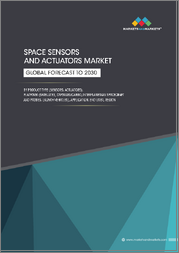
|
시장보고서
상품코드
1638742
LEO 위성 발사체(SLV) 시장 전망 : 기회, 성장 촉진요인, 산업 동향 분석 및 예측(2024-2032년)LEO Satellite Launch Vehicle (SLV) Market Opportunity, Growth Drivers, Industry Trend Analysis, and Forecast 2024 - 2032 |
||||||
세계의 LEO 위성 발사체(SLV)시장은 2023년 139억 달러에 이르고, 2024년부터 2032년까지 13.7%의 연평균 성장률(CAGR)로 성장할 것으로 예측됩니다.
스타링크와 같은 네트워크가 LEO에 소형 위성 클러스터를 배치하면서 위성 별자리는 세계의 인터넷 접근성을 혁신적으로 개선하고 있습니다. 이러한 접근 방식은 소외되고 외딴 지역에 고속의 안정적인 인터넷을 제공하는 것을 목표로 하며, 빈번하고 경제적인 위성 발사에 대한 수요를 크게 끌어올리고 있습니다.
소형화의 발전과 발사 비용의 감소는 소형 및 초소형 위성의 성장을 촉진하여 지구 관측, 통신, 과학 연구 및 내비게이션 분야의 새로운 응용 분야를 개척했습니다. 그러나 LEO 위성 발사 시장도 규제 문제와 우주 쓰레기에 대한 우려의 증가로 위성 배치가 복잡해지고 운영 비용이 증가할 수 있는 등의 도전에 직면해 있습니다. 하지만 글로벌 연결 및 지구 관측 서비스에 대한 수요가 증가함에 따라 주목할 만한 기회도 있습니다. 재사용 가능한 발사체 혁신으로 비용이 절감되고 발사 빈도가 개선되고 있으며, 우주 인프라에 대한 정부의 투자로 산업 확장을 위한 지원 환경이 조성되고 있습니다. 소형 위성 기술의 발전은 시장의 유연성과 발사 효율성을 더욱 향상시키고 있습니다.
발사 유형에 따라 시장은 일회용(소모성)과 재사용 가능한 차량으로 나뉩니다. 일회용 부문은 2023년 66% 이상의 시장 점유율로 압도적인 우위를 차지했는데, 이는 주로 정부 및 상업 고객을 위한 무거운 탑재체를 운반하는 데 중요하기 때문입니다. 더 큰 페이로드를 안정적으로 운반하는 것으로 알려진 소모성 로켓은 높은 일회성 비용에도 불구하고 계속해서 수요를 충족하고 있습니다.
| 시장 범위 | |
|---|---|
| 시작연도 | 2023년 |
| 예측연도 | 2024-2032년 |
| 시작 시장가치 | 139억 달러 |
| 예측 시장가치 | 439억 달러 |
| 연평균 성장율(CAGR) | 13.7% |
페이로드 용량에 따라 시장은 500kg 미만, 501-2,500kg 미만, 2,500-5,000kg으로 세분화됩니다. 500kg 미만 영역은 가장 빠르게 성장하고 있으며, 2032년까지 14.5% 이상의 연평균 성장률(CAGR)이 예상됩니다. 이러한 성장은 지구 관측, 통신 및 IoT 용도에 사용되는 소형 위성에 대한 수요 증가에 힘입어 촉진되고 있습니다. 소형 위성은 비용 효율적이고 신속하게 배치할 수 있어 신흥 기술에 이상적이기 때문에 발사 서비스 제공업체는 소형 위성 사업자를 위해 설계된 전용 서비스로 대응하고 있습니다.
북미는 2023년 36% 이상의 점유율로 전 세계 LEO 위성 발사체 시장을 주도했으며, 예측 기간 동안 이 위치를 유지할 것으로 예상됩니다. 이 지역의 리더십은 재사용 가능한 로켓 기술 및 민간 우주 이니셔티브에 대한 강력한 초점뿐만 아니라 SpaceX, Blue Origin, United Launch Alliance와 같은 주요 업체에서 비롯됩니다. 강력한 인프라와 NASA의 아르테미스 프로그램과 같은 막대한 정부 자금의 지원을 받는 북미는 상업 및 정부 위성 발사의 선두를 유지하고 있습니다.
목차
제1장 조사 방법과 조사 범위
제2장 주요 요약
제3장 업계 인사이트
- 생태계 분석
- 밸류체인에 영향을 주는 요인
- 이익률 분석
- 혼란
- 장래의 전망
- 제조업체
- 유통업체
- 공급자의 상황
- 이익률 분석
- 주요 뉴스
- 규제 상황
- 영향요인
- 성장 촉진요인
- 새로운 위성 기술 및 서비스에 대한 엄청난 수요
- 발사를 더 저렴하고 빈번하게 만드는 혁신
- 우주 프로젝트에서 글로벌 연결 및 팀워크의 빠른 성장
- 혁신과 개발을 촉진하는 강력한 자금과 파트너십
- 저렴하고 유연한 위성 솔루션의 빠른 성장
- 업계의 잠재적 위험 및 과제
- 위성의 안전성을 위협하는 공간 파편 증가
- 규제의 복잡성이 위성 발사 효율을 방해
- 성장 촉진요인
- 성장 가능성 분석
- Porter's Five Forces 분석
- PESTEL 분석
제4장 경쟁 구도
- 소개
- 기업 점유율 분석
- 경쟁 포지셔닝 매트릭스
- 전략 전망 매트릭스
제5장 시장 추계 및 예측 : 출시별(2021-2032년)
- 주요 동향
- 일회용, 소모품
- 재사용형
제6장 시장 추계 및 예측 : 페이로드별(2021-2032년)
- 주요 동향
- 500kg 미만
- 501-2,500kg 미만
- 2,500-5,000kg 미만
제7장 시장 추계 및 예측 : 하위 시스템별(2021-2032년)
- 주요 동향
- 로켓 추진 시스템
- 연료와 추진제
- 유도 시스템
- 페이로드 페어링
- 구조
- 원격 측정, 추적 및 명령 시스템
- 분리 시스템
제8장 시장 추계 및 예측 : 용도별(2021-2032년)
- 주요 동향
- 통신
- 지구관측
- 기술 개발
- 네비게이션
- 우주 과학
제9장 시장 추계 및 예측 : 지역별(2021-2032년)
- 주요 동향
- 북미
- 미국
- 캐나다
- 유럽
- 영국
- 독일
- 프랑스
- 이탈리아
- 스페인
- 러시아
- 아시아태평양
- 중국
- 인도
- 일본
- 한국
- 호주
- 라틴아메리카
- 브라질
- 멕시코
- 중동 및 아프리카
- 남아프리카
- 사우디아라비아
- 아랍에미리트(UAE)
제10장 기업 프로파일
- ABL Space systems
- ARCA Space
- Arianaspace SA
- Blue Origin
- C6 LAUNCH SYSTEMS
- EPrime Aerospace
- Firefly aerospace
- Gilmour Space Technologies
- HyImpulse Technologies GmbH
- ISRAEL AEROSPACE INDUSTRY LTD.
- MITSUBISHI HEAVY INDUSTRIES, LTD.
- Northrop Grumman Corporation
- Relativity Space
- Rocket Lab
- skyroot aerospace
- Skyrora Limited
- SPACE ONE CO., LTD
- SpaceX
- United Launch Alliance, LLC.
The Global LEO Satellite Launch Vehicle (SLV) Market reached USD 13.9 billion in 2023 and is projected to grow at a 13.7% CAGR from 2024 to 2032. Satellite constellations are revolutionizing global internet accessibility, with networks like Starlink deploying clusters of small satellites in LEO. This approach aims to deliver high-speed, reliable internet to underserved and remote areas, significantly driving demand for frequent and economical satellite launches.
Advancements in miniaturization and decreasing launch costs have spurred the growth of small and micro satellites, opening new avenues for applications in Earth observation, communications, scientific research, and navigation. However, the LEO satellite launch market also encounters challenges, including regulatory issues and the rising concern over space debris, which may complicate satellite deployment and add to operational costs. Yet, the growing demand for global connectivity and Earth observation services presents notable opportunities. Reusable launch vehicle innovations are reducing costs and improving launch frequency, while government investments in space infrastructure are creating a supportive environment for industry expansion. Small satellite technology advancements further enhance market flexibility and launch efficiency.
Based on launch type, the market is divided into single-use (expendable) and reusable vehicles. The single-use segment dominated in 2023 with over a 66% market share, primarily due to its importance in carrying heavy payloads for government and commercial clients. These expendable rockets, known for reliability in delivering larger payloads, continue to meet demand despite their higher one-time costs.
| Market Scope | |
|---|---|
| Start Year | 2023 |
| Forecast Year | 2024-2032 |
| Start Value | $13.9 Billion |
| Forecast Value | $43.9 Billion |
| CAGR | 13.7% |
By payload capacity, the market is segmented into below 500 kg, 501-2, 500 kg, and 2, 500-5, 000 kg. The below 500 kg segment is the fastest-growing, with a projected CAGR of over 14.5% through 2032. This growth is fueled by the increasing demand for small satellites used in Earth observation, telecommunications, and IoT applications. Launch providers are responding with dedicated services designed for small satellite operators, as these lightweight satellites are cost-effective and deploy quickly, making them ideal for emerging technologies.
North America led the global LEO satellite launch vehicle market in 2023 with over 36% share, a position it is expected to maintain through the forecast period. The region's leadership stems from key players like SpaceX, Blue Origin, and United Launch Alliance, as well as its strong focus on reusable rocket technology and private space initiatives. Supported by robust infrastructure and substantial government funding, such as NASA's Artemis program, North America remains at the forefront of commercial and governmental satellite launches.
Table of Contents
Chapter 1 Methodology & Scope
- 1.1 Market scope & definitions
- 1.2 Base estimates & calculations
- 1.3 Forecast calculations
- 1.4 Data sources
- 1.4.1 Primary
- 1.4.2 Secondary
- 1.4.2.1 Paid sources
- 1.4.2.2 Public sources
Chapter 2 Executive Summary
- 2.1 Industry synopsis, 2021-2032
Chapter 3 Industry Insights
- 3.1 Industry ecosystem analysis
- 3.1.1 Factor affecting the value chain
- 3.1.2 Profit margin analysis
- 3.1.3 Disruptions
- 3.1.4 Future outlook
- 3.1.5 Manufacturers
- 3.1.6 Distributors
- 3.2 Supplier landscape
- 3.3 Profit margin analysis
- 3.4 Key news & initiatives
- 3.5 Regulatory landscape
- 3.6 Impact forces
- 3.6.1 Growth drivers
- 3.6.1.1 Huge demand for new satellite technologies and services
- 3.6.1.2 Innovations making launches cheaper and more frequent
- 3.6.1.3 Fast growth in global connectivity and teamwork in space projects
- 3.6.1.4 Strong funding and partnerships driving innovation and development
- 3.6.1.5 Fast growth in affordable and flexible satellite solutions
- 3.6.2 Industry pitfalls & challenges
- 3.6.2.1 Growing space debris threatens satellite safety
- 3.6.2.2 Regulatory complexity hinders satellite launch efficiency
- 3.6.1 Growth drivers
- 3.7 Growth potential analysis
- 3.8 Porter's analysis
- 3.9 PESTEL analysis
Chapter 4 Competitive Landscape, 2023
- 4.1 Introduction
- 4.2 Company market share analysis
- 4.3 Competitive positioning matrix
- 4.4 Strategic outlook matrix
Chapter 5 Market Estimates & Forecast, By Launch, 2021-2032 (USD Million)
- 5.1 Key trends
- 5.2 Single use/ Expendable
- 5.3 Reusable
Chapter 6 Market Estimates & Forecast, By Payload, 2021-2032 (USD Million)
- 6.1 Key trends
- 6.2 Below 500kg
- 6.3 Between 501kg to 2,500kg
- 6.4 2,500kg to 5000 kgs
Chapter 7 Market Estimates & Forecast, By Subsystem, 2021-2032 (USD Million)
- 7.1 Key trends
- 7.2 Rocket propulsion system
- 7.3 Fuel and propellant
- 7.4 Guidance system
- 7.5 Payload fairing
- 7.6 Structure
- 7.7 Telemetry, tracking & command system
- 7.8 Separation system
Chapter 8 Market Estimates & Forecast, By Application, 2021-2032 (USD Million)
- 8.1 Key trends
- 8.2 Communication
- 8.3 Earth observation
- 8.4 Technology development
- 8.5 Navigation
- 8.6 Space science
Chapter 9 Market Estimates & Forecast, By Region, 2021-2032 (USD Million)
- 9.1 Key trends
- 9.2 North America
- 9.2.1 U.S.
- 9.2.2 Canada
- 9.3 Europe
- 9.3.1 UK
- 9.3.2 Germany
- 9.3.3 France
- 9.3.4 Italy
- 9.3.5 Spain
- 9.3.6 Russia
- 9.4 Asia Pacific
- 9.4.1 China
- 9.4.2 India
- 9.4.3 Japan
- 9.4.4 South Korea
- 9.4.5 Australia
- 9.5 Latin America
- 9.5.1 Brazil
- 9.5.2 Mexico
- 9.6 MEA
- 9.6.1 South Africa
- 9.6.2 Saudi Arabia
- 9.6.3 UAE
Chapter 10 Company Profiles
- 10.1 ABL Space systems
- 10.2 ARCA Space
- 10.3 Arianaspace SA
- 10.4 Blue Origin
- 10.5 C6 LAUNCH SYSTEMS
- 10.6 EPrime Aerospace
- 10.7 Firefly aerospace
- 10.8 Gilmour Space Technologies
- 10.9 HyImpulse Technologies GmbH
- 10.10 ISRAEL AEROSPACE INDUSTRY LTD.
- 10.11 MITSUBISHI HEAVY INDUSTRIES, LTD.
- 10.12 Northrop Grumman Corporation
- 10.13 Relativity Space
- 10.14 Rocket Lab
- 10.15 skyroot aerospace
- 10.16 Skyrora Limited
- 10.17 SPACE ONE CO., LTD
- 10.18 SpaceX
- 10.19 United Launch Alliance, LLC.



















